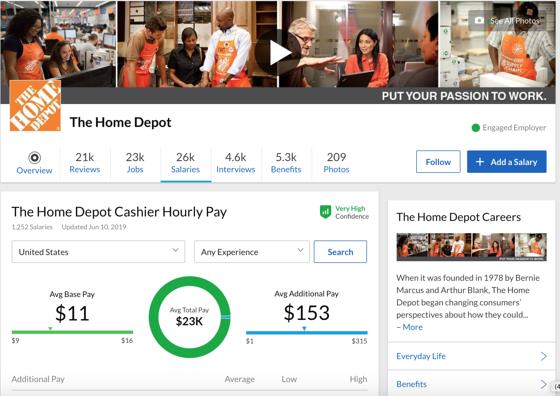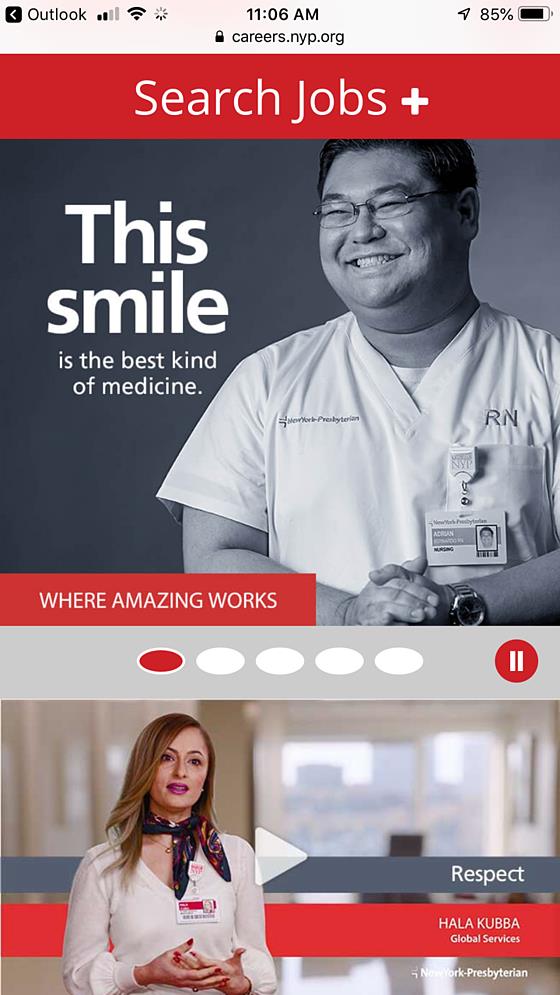
Best Practices in Healthcare Recruitment Marketing: Filling Those Open Healthcare Positions
In this first installment of our Plain Talk Healthcare Marketing series, we’ll prescribe some practical advice about some of the most difficult marketing that healthcare groups have to do—recruitment marketing—and how to smooth the path to filling open healthcare positions using best practices in healthcare recruitment marketing.
- It’s Not Them, It’s You (But It’s Not Your Fault): The Rise of the ATS
- But It’s Not Entirely You: The Battle for Lower-Skilled Healthcare Workers
- 4 Best Practices in Healthcare Recruitment Marketing
- This All Sounds Great But Expensive: A Formula for Problem Position
- Get Help With Implementing Best Practices in Your Healthcare Recruitment Marketing
Talent attraction in the healthcare industry, where to start? It’s no secret that the US unemployment rate is near historic lows at 3.6%, and the healthcare industry unemployment rate is at an astounding 2.1%. It’s no secret, but if you’re reading this, it probably is a headache for you. Here are some tips for best practices in healthcare recruitment marketing.
To kick off the series, we’ll discuss issues that impact everything from lower-skilled support staff (caregivers, CNAs, etc.) to nurses, therapists, and other key staff.
It’s Not Them, It’s You (But It’s Not Your Fault): The Rise of the ATS
Flashback to 2008. The economy was rough, you had your new applicant tracking system (ATS) and the hardest choice you had to make was which of the qualified applicants in your ATS was the best qualified fit for the least money. You’re not alone. At that time, the explosion of ATS use to automate and pre-screen applicants was an essential tool for efficiency in overworked, underappreciated HR departments across the country.
But the ATS had the unintended consequence of training us to depersonalize the talent attraction process. Interested candidates would often be flushed into automated resume scanners, career sites that required 13-page applications to be completed and automated responses. Often without ever having had a conversation or direct communication of any kind with a hiring manager or HR.
It’s a seller’s market
In marketing terms, we’d call that a “buyer’s market,” and HR’s primary focus was on screening an overabundance of applicants out rather than inviting them in. Job descriptions were often spartan and very focused on what the hospital or clinic wanted, not what they were offering to candidates. But it’s not a buyer’s market anymore. It’s a seller’s market, and attracting the best talent is a tough sell. Organizations who are still screening candidates out with outdated methods rather than actively selling them on positions are losing that battle. If that’s your organization, the problem is that the habits and best practices of the 2000’s no longer work.
But it’s not entirely you: The Battle for Lower-Skilled Healthcare Workers
However, the problem isn’t only that it’s a seller’s market in healthcare. For example, the explosive increase in the need for lower skilled healthcare workers (caregivers, CNA’s, etc.) in the industry combined with the squeeze of poor reimbursement rates from Medicare and insurance giants, means that the competition to fill these hourly positions has gotten tougher.

Take, for example, a recent anecdote we witnessed. While standing in a retail store, we overheard a cashier talking about how “today was her last day.” She went on to explain that she was leaving to become a cashier at a local convenience store. This was because she was going to start the new job at $12.50/hour with benefits. At her current retail job, she was only making $11/hour with no benefits.
Take, for example, a recent anecdote we witnessed. While standing in a retail store, we overheard a cashier talking about how “today was her last day.” She went on to explain that she was leaving to become a cashier at a local convenience store. This was because she was going to start the new job at $12.50/hour with benefits. At her current retail job, she was only making $11/hour with no benefits.
What was scary about this experience to us? We’ve worked with healthcare clients who start with lower-skill salaries closer to $10.50/hour. So how on Earth do you convince someone to work in a challenging position like CNA for 20% less money than they can make selling gum and gas behind a counter at a convenience store?
4 Best Practices in Healthcare Recruitment Marketing
The good news for these lower tier positions is that there is a new crop of best practices being trailblazed by the very competitors (Walgreens, Chick-fil-A, Home Depot, Starbucks) who are stealing your candidates. These best practices will work for you too, and not just for low-skilled positions.
So, what practices can you put in place to improve your applicant and hiring success? Here are a few:
1. Build or improve your employer brand
First, if you haven’t already started, it helps to change your mentality about talent attraction. If you’re in a seller’s market for talent attraction (i.e. the candidates are playing hard to get), start thinking about careers like you are marketing them. When you are selling something (in this case careers) you can either be a brand-name “product” or a generic. Career sites and career communications from the 2000’s and early 2010’s were pretty generic. But you can, relatively easily, build an employer brand that will help sell the best candidates on your opportunities. Simply put this is your value proposition for a candidate that answers their question “why is working for you better than working for someone else?”
2. USPs and ESATs
Like any brand, your employer brand has to have some “unique selling points” or USPs. These are the things that can set you apart from competitors. More importantly, these are things that potential and existing employees care about, possibly more than the company does. These include company culture, benefits, perks, vacation policies, child care and maternity/paternity policies, technology allowances, etc.
When building your employer brand, don’t guess about what keeps your employees happy. You’re probably already conducting an employee satisfaction survey (ESAT). These surveys, when conducted thoroughly, can be gold mines of insight. Insights pulled from your ESAT allow you to really understand why employees join and stay. They also help you understand why they leave, but we’ll get to retention in another plain-talk article soon.
3. Messaging
Once you have your USPs, figure out how best to communicate them through social media, job boards, even word-of-mouth for referrals. Your messaging around USPs should be simple and memorable but differentiate you from others. It should also be honest and authentic to who your organization really is. If not, you’ll see 90-day turnover become a problem as new staff will end up feeling like they were sold a bill of goods.
4. Technology
We’ve seen some great advances in technology use with clients and industry leaders in healthcare over the last few years. If your use of technology hasn’t changed in that time period, it might be worth an honest assessment. Like you, job seekers have been trained to believe that looking for a job is, at least in part, a highly digital experience.

Review your site’s digital experience
In many job categories in healthcare, that digital search is predominantly a mobile phone, digital experience. So, ask yourself:
- “Is my job application process super easy to complete on a mobile phone?”
- Abandonment rates for online applicants statistically increase 50% per application page. If you still have the 13-page online application, you are missing out on the best candidates.
- Google penalizes you for poor mobile experience/performance so your jobs might not show up on organic job searches.
Personalize the applicant experience
Catering to a seller’s market also means finding ways to personalize the applicant experience. Things to consider here include:
- What does the “applicant journey” look like? Not just application length but experience.
- Are we sharing employee-led content?
- Are we illustrating our culture?
- Am I describing positions in the best light?
- Am I using video conference, live chat (and well executed chat bots) and SMS effectively to make a connection with candidates?
- Can the candidate easily vet my organization on social media? (They will look. If your Glassdoor, Facebook, Indeed and other reviews are not great, don’t expect to convert).
- Are we effectively using online recruiting events?
- How long will it take for a great applicant to connect to a human? (hint, the longer this takes, the more likely you will lose the candidate.)
If your goal is to find the best fit for your organization and candidates, smart, humanistic use of technology increasingly matters, even if that technology includes the use of Artificial Intelligence for increased efficiency. Job conversion rates for hospitals using these tactics are significantly higher than those that are not. Importantly, their turnover rates are lower as well, so the leaky bucket of turnover isn’t so leaky.
This All Sounds Great But Expensive: A Formula for Problem Position
If building a new employer brand and backing it up with the technology and processes needed for effectiveness sounds like a budget-breaker, it may be time to build a financial model to support the request for additional budget with the board or C-suite. That may sound complicated, but it’s really not hard. Here’s an example:
Start by focusing on a problem position. To keep this example simple, we’ll go with a CNA. Let’s say that you have 50 open, full-time (1,920 hours/year) CNA positions at any given time. Let’s also say that CNAs, on average, can be billed at $22/hour with a net profit of 20%. Now some quick math:
- 50 open positions x 1,920/hours/year = 96,000 hours unbilled per year
- 96,000 x $22 = $2,112,000 lost revenue per year
- For for-profit groups – $2,112,000 x 20% net profit = $422,400 in lost profit per year
Now do this exercise for every open position. Nurses, OT/PT, MRI/CT techs, and so on. The actual cost of unfilled positions to revenues (and lost profitability) can be astonishing. We know of one healthcare organization that realized that the cost of open positions was nearly $30 million in lost revenue. These figures give HR the ability to make a strong case with the C-suite for additional spending in talent attraction.
Get Help With Implementing Best Practices in Your Healthcare Recruitment Marketing
Ultimately, by investing in this approach, healthcare organizations can better fulfill their missions to provide excellent care while creating opportunities for growth in revenues and reputation. Examples of healthcare organizations following these best practices can be found at The Cleveland Clinic career site, where significant emphasis is placed on culture, diversity, advancement, and values. Or check out New York Presbyterian Hospital, which is making incredibly effective use of employee content.
If you’d like to learn more about best practices in healthcare recruitment marketing or even have us “scorecard” your current efforts, contact our healthcare marketing and employer branding teams or give us a call at 502-499-4209.
Our Articles Delivered
Signup to receive our latest articles right in your inbox.





